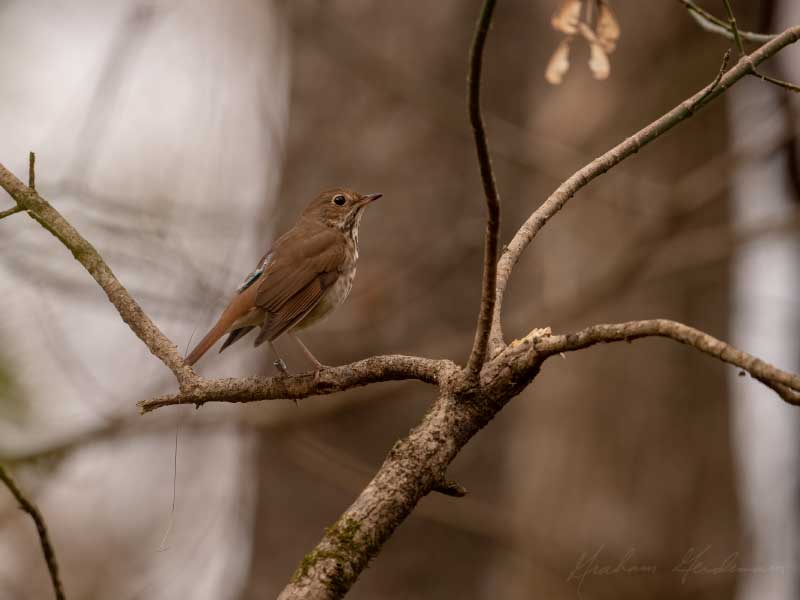Each fall we look forward to the arrival of our avian winter-guests – birds like Hermit Thrushes, White-throated Sparrows, Yellow-rumped Warblers, and Ruby-crowned Kinglets. These are all birds that breed further north or at higher elevations but instead of flying to Central or South America, they spend the winter with us here in Middle Tennessee.
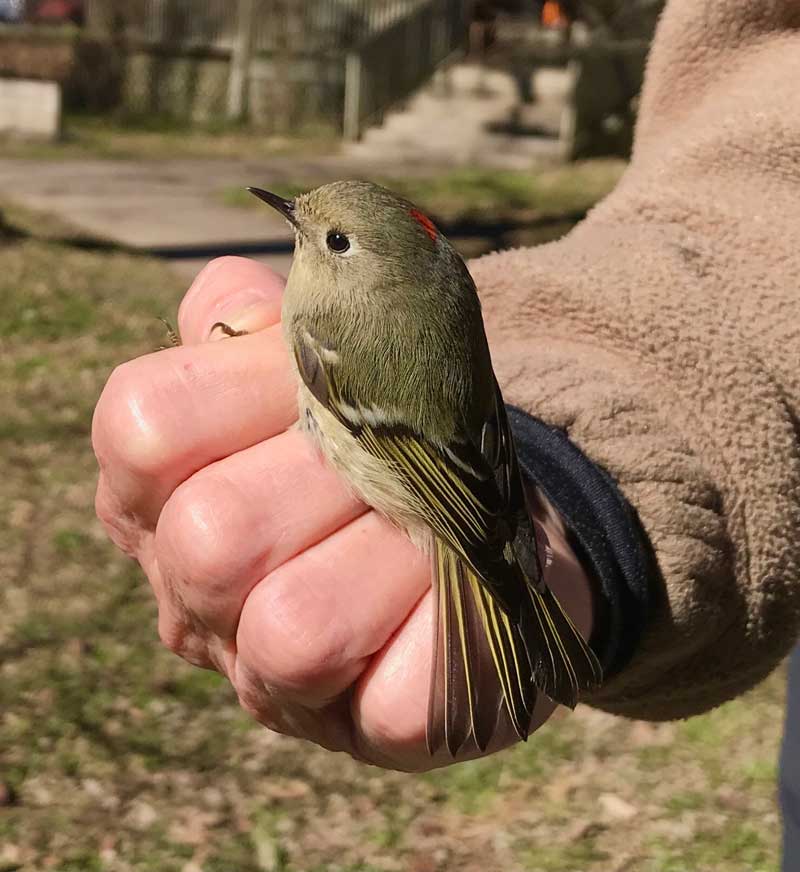
Hermit Thrushes & The Ideal Winter Habitat
In their breeding areas, Hermit Thrushes, Catharus guttatus, can be identified by their habit of quickly raising and then slowly lowering their tail, as well as their thin white eyeing and contrasting rusty brown tail. They are known for their beautiful song and can be found foraging in leaf litter for insects and in trees for fruit during their winter here in middle Tennessee.
The Warner Park Nature Center Bird Banding Station, has captured 37 Hermit Thrushes since 1982. Interestingly, only 3 Hermit Thrushes were captured during the first 20 years of banding from 1982-2001. The other 34 were captured between 2002-2021. This may be because the area around the banding station has evolved to have a more closed tree canopy with thick understory along Vaughn Creek, the ideal habitat for thrushes.
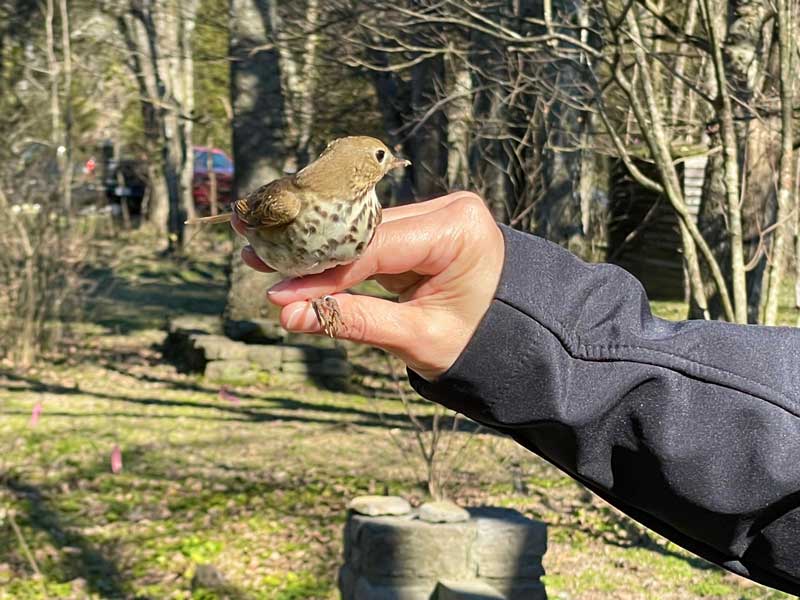
MOTUS Research
In 2020, the BIRD Program received training and federal approval from the Bird Banding Laboratory to radio-tag five species of thrushes to help us better to understand if Warner Parks, close to an urban center and with intact forests, provides important habitat for birds (we refer to this as our Motus project). Motus research compliments the long-term bird banding station at the Warner Park Nature Center, which has been on-going since 1982! Our hope is that Warner Parks provides a good winter habitat with food, shelter, and water– a place where Hermit Thrushes can thrive.
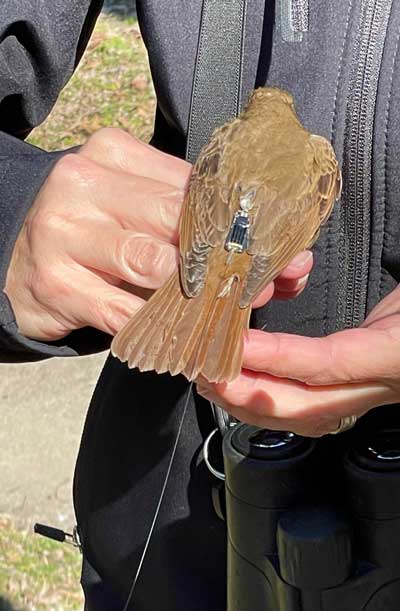
The Results:
Based on our banding records, it appears individual Hermit Thrushes return to Warner Parks winter after winter. This tendency is referred to as site fidelity, a behavior documented by researchers in other parts of the Hermit Thrush’s winter range. The evidence is in our research:
- One Hermit Thrush we captured in November 2015 was recaptured November 2016, October 2017, November 2019, and again in February 2022
- Another Hermit Thrush captured in November 2016 was recaptured, and radio tagged in October 2020 and spent all winter, 171 days, at WarnerParks
- In Fall 2021, we captured and radio-tag 3 Hermit Thrushes, all of which have remained in the Warner Parks this winter. Interestingly, it appears they have spread out and created small territories within the Parks. Previous studies by researchers in Louisiana found wintering Hermit Thrushes established territories 1.4 acres in size, which fits with the behavior we have seen here.
Evidence has also shown that Hermit Thrushes gain plenty of fat while they winter in the Warner Parks in preparation for their spring migration, indicating that Warner Parks provides good wintering habitat:
- One of the Hermit Thrushes originally captured in fall 2021 was recaptured on 01 February, 2022 and had gained over 4 grams (14% of its body weight)!
We look forward to reporting on more insights and lessons learned,
Laura Cook & the Warner Park BIRD Team
—
The BIRD Program is funded by Friends of Warner Parks, in collaboration with Warner Park Nature Center and Nashville Metro Parks and Recreation. This year marks the 40th year of the WPNC Bird Banding Station thanks to our dedicated volunteers, staff, and partners! Please support our legacy bird research and public engagement programs with a donation, becoming a member, and volunteering with Warner Parks. #ProtectTheBirds #ProtectWarnerParks.
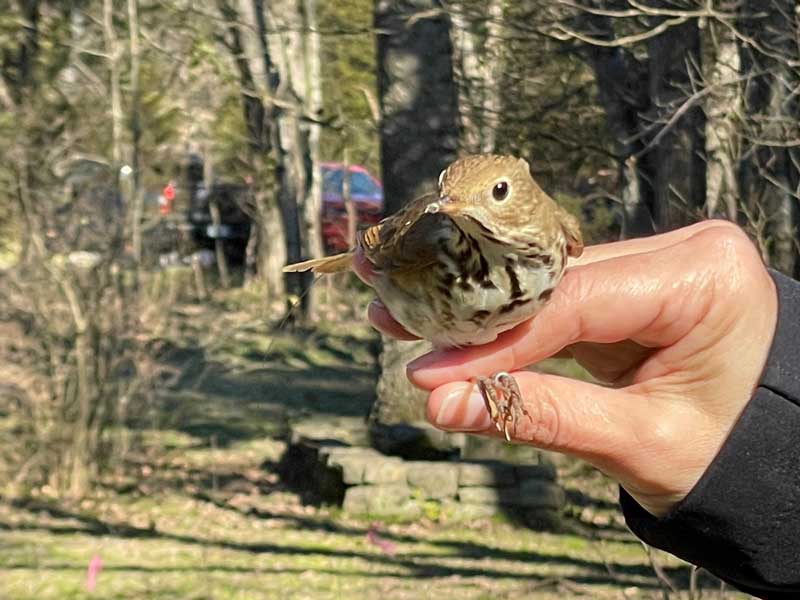
BONUS BIRD TIP: Your Backyard Matters!
Hermit Thrushes travel hundreds of miles each fall, returning to the same area in search of a safe environment with food and water during the cold winter months. You can help by:
– Removing exotics and planting native plants, especially fruit bearing trees and shrubs
– Keep your cat indoors – Hermit Thrushes are very vulnerable to predation by non-native cats because they often forage on the ground
– Leave your leaves – Hermit Thrushes forage for insects in the leaf litter
– Don’t use pesticides
– See our Bird Saving Tips Blog to learn more!

